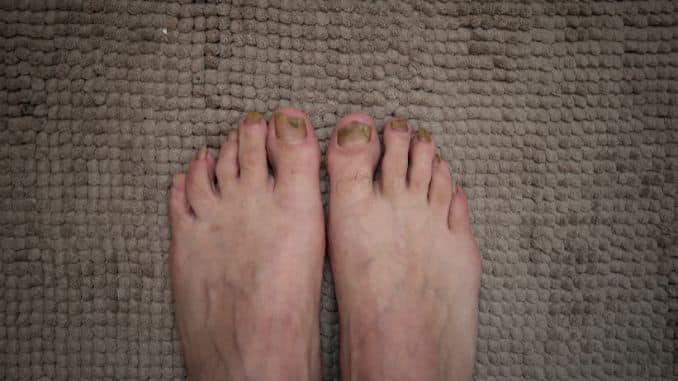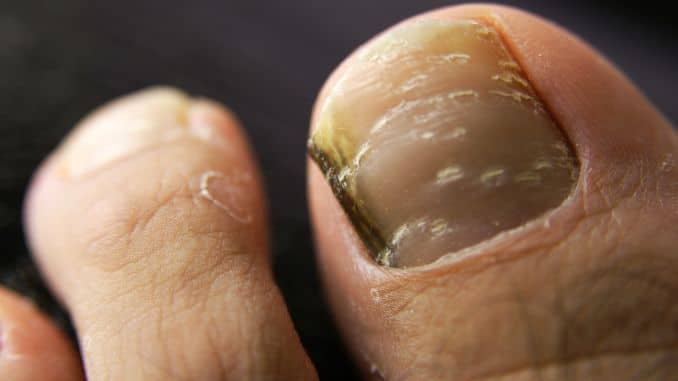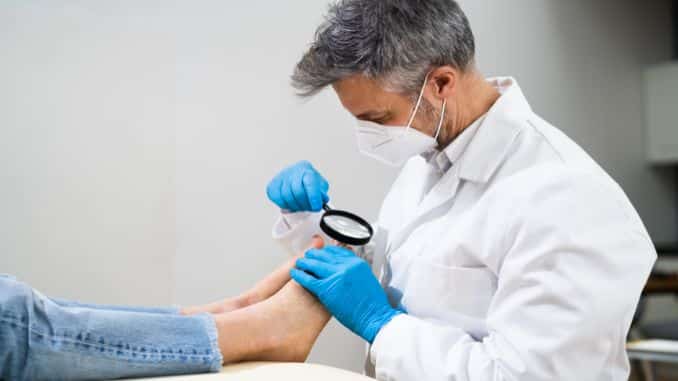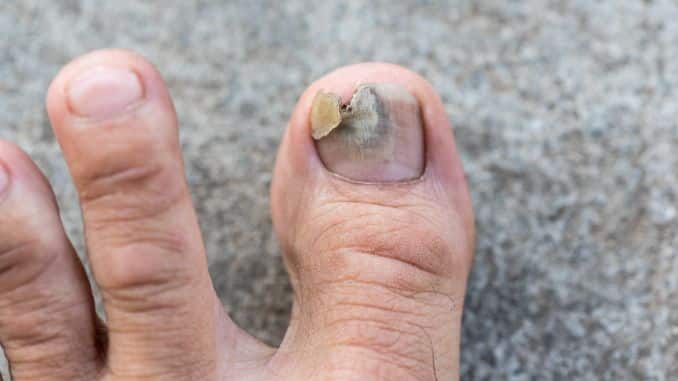Sudden loss of a toenail without any pain can be a perplexing and alarming situation, leaving you questioning what could have caused it.
Fear not, as we discover the surprising reasons why your toenail is falling without any warning.
In this article, we will explore various factors that can lead to the unexpected loss of a toenail and explain each possibility in detail, uncovering the truths and dispelling any misconceptions.
By understanding the potential causes, you can gain insight into how to prevent it from happening in the future and take appropriate action to ensure your toenail health.
So, if you’re wondering, “Why did my toenail fall off without pain or any warning signs?”, join us on this investigative journey to discover the answers you’ve been searching for.
3 Surprising Reasons Why Your Toenail Fall
1. Fungal Infections and Toenail Loss

Fungal infections often cause toenail problems, sometimes leading to painless toenail loss. “Why did my toenail fall off without pain? Severe damage from the infection caused by toenail fungus can cause the nail plate to become loose and eventually fall off without discomfort.
Symptoms of a fungal toenail infection include:
- noticeably thicker toenails white or yellowish-brown discoloration on your toenails dry,
- brittle,
- or ragged toenails foul smell coming from toes’ unusual toenail shape.
Impacted ingrown nails [³] can exacerbate the condition, leading to further complications and increased risk of toenail loss.
If you suspect a fungal infection is causing your painless toenail loss, consult a healthcare professional. They can offer antifungal medications, topical treatments, or lifestyle changes to prevent future infections.
2. Trauma and Detached Toenail
Despite the usual association of trauma with pain, painless toenail loss can also result from trauma [²]. It can result from different causes, such as accidentally dropping a heavy object on the toe or experiencing repetitive pressure from poorly fitting footwear.
When trauma occurs, blood vessels under the nail bed may rupture, leading to bleeding and swelling. Over time, accumulated blood [⁵] can create pressure under the nail, resulting in detachment. Seek medical attention if pain, swelling, or signs of infection persist.
3. Medical Conditions That Can Cause Toenail Loss

In addition to fungal toenail infections [⁴] and trauma, certain medical conditions can also lead to painless toenail loss.
These conditions may affect the overall health of the nails, making them more susceptible to damage and detachment.
Some medical conditions that can cause toenail problems include:
Psoriasis: Psoriasis, a persistent autoimmune disorder, can impact the skin and even the nails. Nail psoriasis [⁶] may lead to pitting, changes in color, and detachment of the nail plate from the nail bed. In severe cases, the nails may become thin and brittle, leading to painless nail loss. Thus, managing nail psoriasis is also crucial.
Thyroid disorders: Disruptions in thyroid hormone levels can influence the health of nails. Both hyperthyroidism and hypothyroidism [⁷] can lead to alterations in nails, such as brittleness, ridges, and detachment. In some cases, painless toenail loss may occur as a result.
Peripheral arterial disease: Peripheral arterial disease (PAD) is a condition defined by decreased blood circulation to the limbs, including the feet. Poor circulation [⁸] can affect nail health and lead to painless nail loss. Other symptoms of PAD may include leg pain, numbness, and slow wound healing.
If you believe a medical issue could be responsible for your painless toenail loss, seeking guidance from a healthcare professional is vital.
They can evaluate your symptoms, perform any necessary tests, and provide appropriate treatment options.
Other Causes Of Toenail Fall Out
1. Nutritional Deficiencies

Deficiencies in essential vitamins and minerals, like iron, biotin, zinc, and protein, can lead to weak and brittle nails that might just fall off.
Ensuring you have a balanced diet with plenty of nutrients is key to keeping your nails strong and healthy.
2. Medications and Treatments
Some medications and treatments can change your nails. Chemotherapy drugs, for example, can make your nails brittle and discolored, leading to them eventually detaching.
Even medications for acne or psoriasis can have similar effects on your nail health. It’s important to be aware of these potential side effects if you’re undergoing treatment.
3. Exposure
Nail polish or nail polish removers or harsh nail products can seriously weaken and damage your nails. The chemicals can dry out your nail bed and the skin around it, making your nails more likely to fall off.
Why did my toenail fall off without pain? It could be due to the damage caused by these products, which can happen gradually and painlessly over time.
It’s a good idea to take breaks from nail products and protect your hands if you work with chemicals.
4. Systemic Diseases

Conditions like diabetes and lupus can also impact your nail health. Diabetes can cause poor circulation and nerve damage, which affects your feet and nails.
Lupus, being an autoimmune disease, can lead to inflammation and damage various body parts, including your nails.
This can result in them becoming weak and falling off. If you have a systemic disease, it’s crucial to manage it well and keep an eye on your nail health.
How To Prevent Toenail Problems?
Prevention is key when it comes to maintaining healthy toenails and avoiding painless toenail loss. Here are some tips to help you prevent toenail problems:
- Ensure your feet remain clean and dry, particularly between the toes.
- Apply antibiotic ointment if you notice any cuts or scrapes.
- Trim your toenails in a straight line, avoiding rounding the corners.
- Avoid tight-fitting shoes or high heels that can put pressure on the toes.
- Wear flip-flops or sandals when walking in public places like swimming pools, locker rooms, or communal showers.
- Avoid sharing nail clippers, emery boards, or other personal items that can spread fungal infections.
Implementing these preventive measures, along with considering oral antifungal medications if necessary, can significantly reduce your risk of toenail problems and painless toenail loss.
When To Seek Medical Attention For Toenail Problems?

While painless toenail loss may not always be cause for immediate concern, there are certain situations where seeking medical attention is crucial. Consider consulting a healthcare professional if you experience any of the following:
- If you notice redness, swelling, warmth, or pus around the affected toenail, it may indicate an infection.
- If you experience persistent pain, tenderness, or discomfort in the area of the toenail loss.
- If you have a history of recurrent toenail problems, such as repeated fungal infections or ingrown toenails, it’s advisable to seek medical advice.
Remember, it’s always better to be cautious and seek professional guidance when in doubt about the health of your toenails.
Final Thought
Your toenails play an essential role in protecting the underlying structures of your feet. Taking care of them is crucial for overall foot health. So, if you find yourself wondering, “Why did my toenail fall off without pain?”, take the necessary steps to investigate the cause and address any underlying issues. Your feet will thank you for it!
Discover the surprising reasons why your toenail fell off without pain. Learn about fungal infections, trauma, medical conditions, and preventive measures to maintain healthy toenails. Check out our “Best Foods that Rapidly Slim & Heal in 7 Days.“


